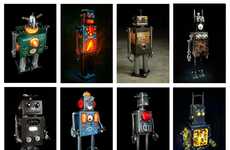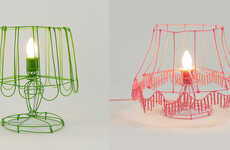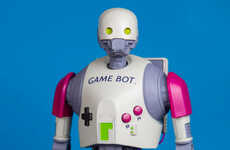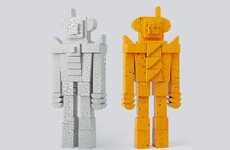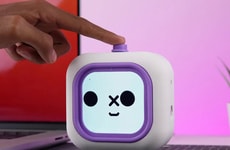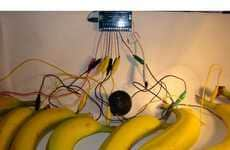
Recycled Junkbots
Going Like Sixty — December 4, 2008 — Art & Design
References: flickr & geeky-gadgets
Mario Caicedo Langer, an artist from Bogota, Colombia, had some fun deconstructing everyday household items and then reconstructing them into junkbots. It's what we all should do with that tub full of odd remotes, broken digital cameras, outdated webcams, fizzed-out power blocks, and thousands of feet of various miscellaneous cables.
Mario Caicedo Langer's junkbots were inspired by Mousey the Junkbot, a DIY robot creation demonstrated in the video above.
Implications - The capacity of contemporary technology to transform something old and seemingly useless into a highly functional product is very appealing to consumers. Not only does this concept appeal to eco-conscious consumers wary of depleting the earth's resources, but it demonstrates the efficiency of the human race.
Mario Caicedo Langer's junkbots were inspired by Mousey the Junkbot, a DIY robot creation demonstrated in the video above.
Implications - The capacity of contemporary technology to transform something old and seemingly useless into a highly functional product is very appealing to consumers. Not only does this concept appeal to eco-conscious consumers wary of depleting the earth's resources, but it demonstrates the efficiency of the human race.
Trend Themes
1. Junkbot Creations - Opportunity for artists or makers to create unique robots and gadgets by upcycling discarded or unused items.
2. DIY Robotics - Consumers can build their own robots using tools and gadgets lying around to reduce waste and be resourceful.
3. Sustainability Through Innovation - Creating new and innovative products through recycling and upcycling promotes sustainable practices and appeals to eco-conscious consumers.
Industry Implications
1. Art and Design - Artists and designers can create unique robot sculptures and art installations through upcycling and repurposing old gadgets.
2. Consumer Electronics - The use of DIY robot building with discarded electronics products can be used to promote the reusability of products, in turn increasing the life span of consumer electronics products.
3. STEM Education - DIY robotics can be used as a teaching tool in schools to encourage creativity, resourcefulness, and innovation among students while also teaching the importance of sustainability.
5.1
Score
Popularity
Activity
Freshness

